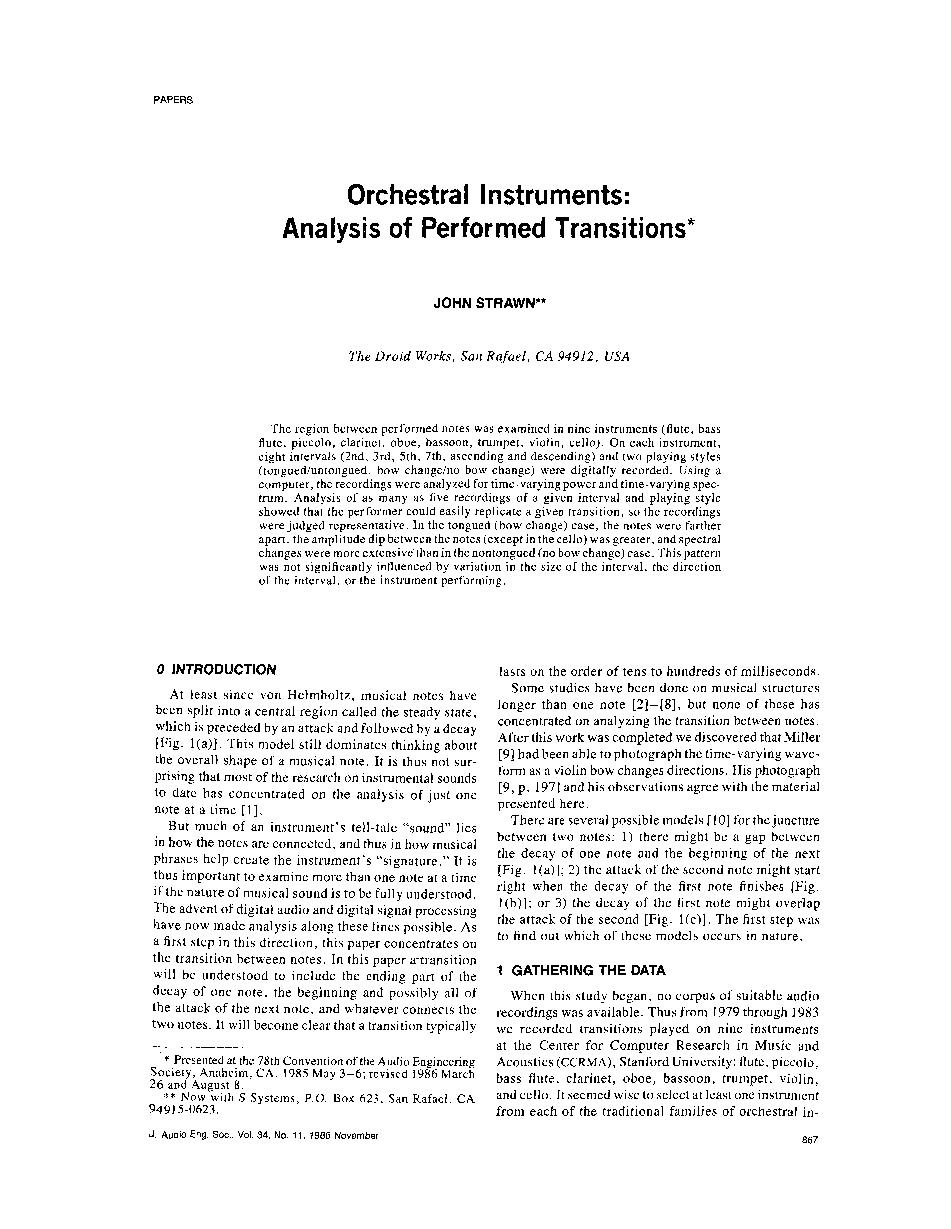Home / Publications / E-library page
You are currently logged in as an
Institutional Subscriber.
If you would like to logout,
please click on the button below.
Home / Publications / E-library page
Only AES members and Institutional Journal Subscribers can download
The region between performed notes was examined in nine instruments (flute, bass flute, piccolo, clarinet, oboe, bassoon, trumpet, violin, cello). On each instrument, eight intervals (2nd, 3rd, 5th, 7th, ascending and descending) and two playing styles (tongued/untongued, bow change/no bow change) were digitally recorded. Using a computer, the recordings were analyzed for time-varying power and time-varying spectrum. Analysis of as many as five recordings of a given interval and playing style showed that the performer could easily replicate a given transition, so the recordings were judged representative. In the tongued (bow change) case, the notes were farther apart, the amplitude dip between the notes (except in the cello), was greater, and spectral changes were more extensive than in the nontongued (no bow change) case. This pattern was not significantly influenced by variation in the size of the interval, the direction of the interval, or the instrument performing.
Author (s): Strawn, John
Affiliation:
The Droid Works, San Rafael, CA
(See document for exact affiliation information.)
Publication Date:
1986-11-06
Import into BibTeX
Permalink: https://aes2.org/publications/elibrary-page/?id=5239
(1513KB)
Click to purchase paper as a non-member or login as an AES member. If your company or school subscribes to the E-Library then switch to the institutional version. If you are not an AES member Join the AES. If you need to check your member status, login to the Member Portal.

Strawn, John; 1986; Orchestral Instruments: Analysis of Performed Transitions [PDF]; The Droid Works, San Rafael, CA; Paper ; Available from: https://aes2.org/publications/elibrary-page/?id=5239
Strawn, John; Orchestral Instruments: Analysis of Performed Transitions [PDF]; The Droid Works, San Rafael, CA; Paper ; 1986 Available: https://aes2.org/publications/elibrary-page/?id=5239